Flowing through Texas, with some 1,280 miles of waterway, the Brazos River earns its place as one of the most significant rivers in the state and the country. The headwater source for the river bubbles up in Blackwater Draw, in Roosevelt County, New Mexico. The mouth of the river dumps into the Gulf of Mexico near Freeport. Read these 10 facts about the Brazos River to learn how the waterway impacts the history and culture of the state.
You’ll Find Lakes in the Brazos

Beautiful
Possum
Kingdom Lake forms near the dam in the Brazos River.
©Brandon-Smith/Shutterstock.com
Along the course of the Brazos River, over 40 lakes exist, plus other streams and rivers. In the upper part of the Brazos, three lakes have been dammed off, including Possum Kingdom Lake, Whitney Lake, and Granbury Lake. Other lakes along the way include many filled with fish species popular among sports fishers, including Lake Daniel, Lake Waco, and Lake Stamford.
The Brazos River Offers Loads of Put-In Points for Paddlers

White water rafting, among other watercraft sport, is highly favored along the Brazos River.
©joshschutz/iStock via Getty Images
One of the most popular activities along the Brazos River is white water rafting. You’ll also find loads of tubes floating beside canoes and kayaks. The river offers multiple, easy-access put-in points for boats. Some of the most popular include those at the Old Settlement Passage, Highway 16 bridge to FM-4 bridge, Historic Hidalgo Falls, and in Stephen F. Austin State Park.
You’ll Find Loads of Wildlife and Plants Along the Brazos River
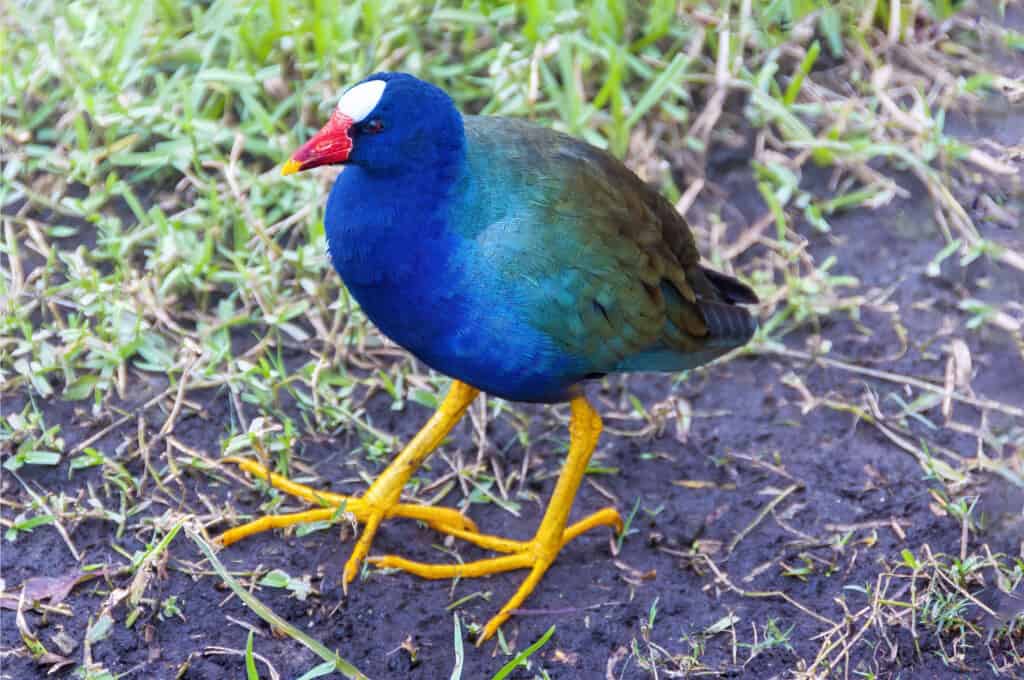
You’ll find intriguing wildlife along the Brazos River, like the American purple gallinule.
©iStock.com/barbaraaaa
In and along the Brazos River, you’ll find an abundance of amazing wildlife. Some of the critters you could spot include:
- Feral hogs
- Herons
- Barred owls
- Least bitterns
- Purple gallinules
- Bobcats
- White-tailed deer
- American alligators
- Catfish
- Gars
- Crappies
- Diamondback terrapins
- Nutrias
Before White Settlers Came In, the Brazos River Was Home to the Comanches
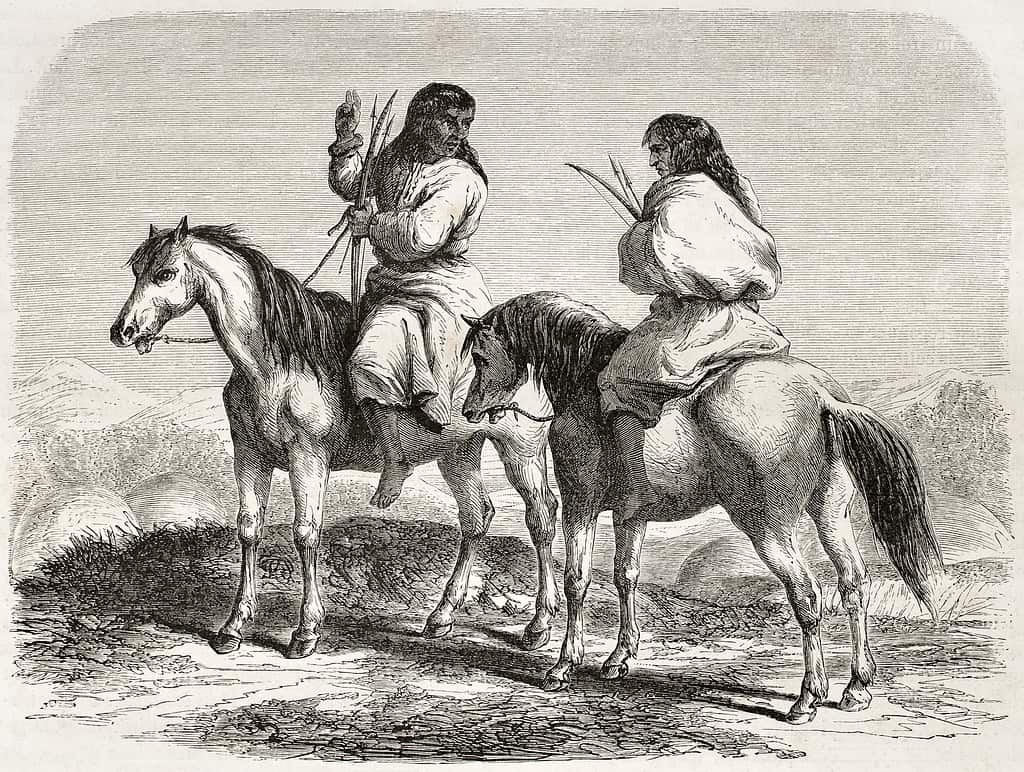
The Comanche people once thrived along the Brazos River, before European settlers took over the land and drove off the First Nations.
©Marzolino/Shutterstock.com
Prior to the invasion of White European settlers, the Brazos River was home to the Comanche Nation. In the late 1800s, a large military force entered the land and swept through attacking the heart of the Comancheria, the homeland of this First Nation.
The Brazos River Has Created a Fertile Region
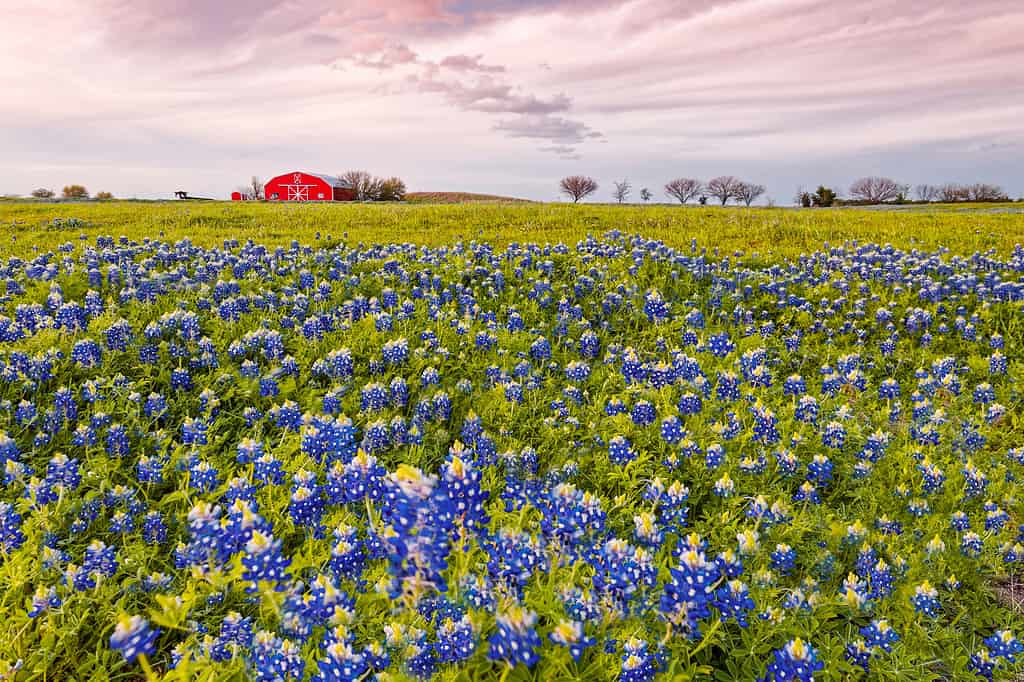
The Brazos River has helped to create lush farmlands all along its path.
©Silvio Ligutti/Shutterstock.com
Thanks for the waters of this massive river, the entire region around the Brazos River is exceptionally fertile. Wallis, Texas, particularly, has fertile lands with more than 2,000 farms and ranches in Austin County alone.
The Brazos River Inspired Settlements to Form in the Area

Many towns have grown up along the Brazos River, including Lubbock, Texas.
©iStock.com/Patricia Elaine Thomas
Thanks to the lush land created by the Brazos River, many settlements came to be along the shores of the river. The fertile farmlands attracted settlers, as well as folks just looking for a good place to live near fresh water. Ports and trade routes found favor along the river, as well, drawing even more communities to the river’s shores.
The Brazos River Ranks as the 14th Longest River in the United States
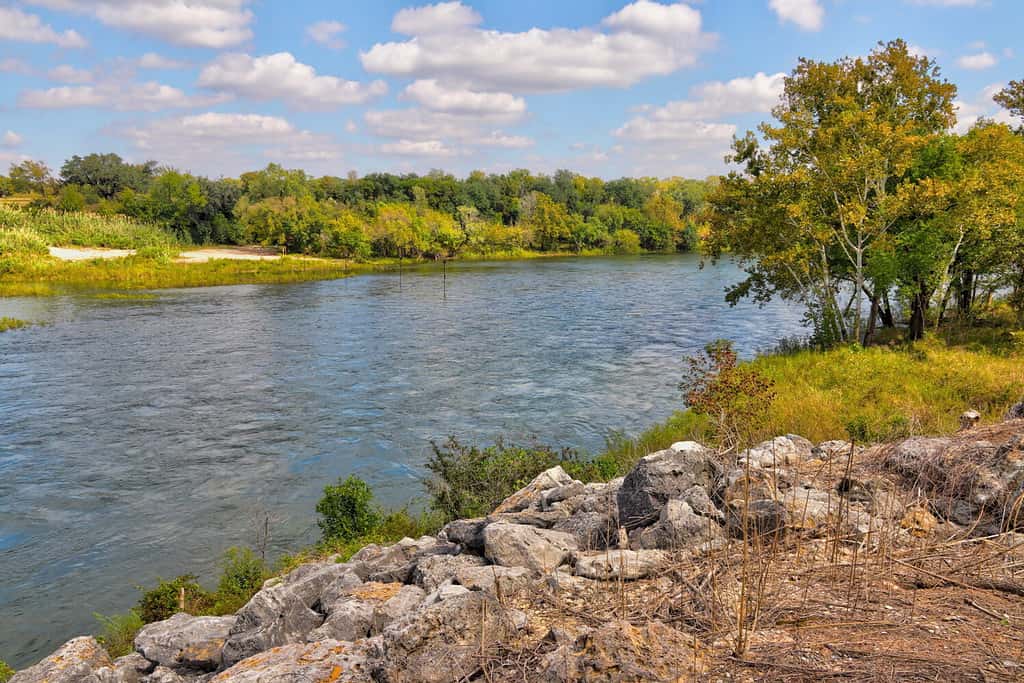
The Brazos River is the 14th longest river in the country and the longest in Texas.
©Hundley Photography/Shutterstock.com
Flowing along for approximately 840 miles, the Brazos River happens to be the longest river in the state of Texas. The massive river also happens to be the 14th longest river in the entire country, with the river basin covering 45,000 square miles all in all.
The River Was Formerly Known as the River of the Arms of God
Once upon a time, when the Spanish explorers first entered the terrain, the Brazos River was named the Rio de los Brazos de Dios. This name literally translates into English as the River of the Arms of God. One legend suggests the name came from Francisco Vázquez de Coronado who searched for the Seven Cities of Gold in Texas. He and his fellows were about to die due to lack of water when their Native American guides brought them to the river. Their lives were saved, seen like the welcoming, saving arms of God. Thus, the river earned its name, which later shortened to the Brazos River (or “arms”).
Go Paddling, but Don’t Go Swimming in the Salty Water of the Brazos!
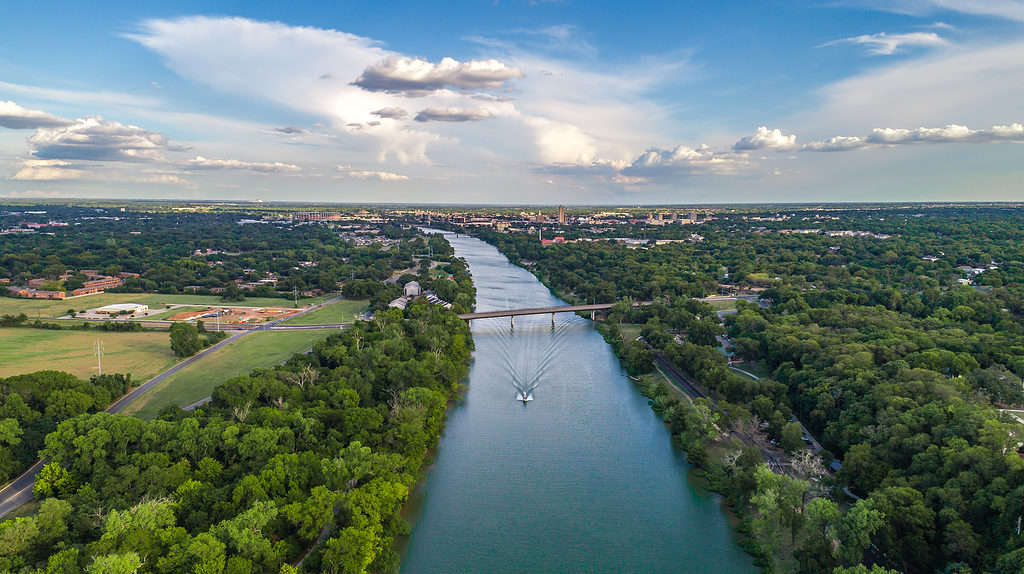
The beautiful Brazos River in Texas comes highly recommended for boaters. But high salinity and bacteria should deter swimmers.
©davisdeatonphotography/Shutterstock.com
While the paddling on the Brazos River is some of the best in the country, the Brazos River Authority has concerned for both the high salinity (saltiness) and bacterial levels of the water. They advise that your activities remain confined to the boats and to avoid swimming for safety reasons.
The Brazos River is Rich with Geological Terrain
One of the most splendid things about the Brazos River is its pathway through some of the most significant geological regions of Texas. The watershed of the Brazos begins west of Lubbock in the High Plains of Texas, resting at an elevation of 1,500 feet approximately, running at a higher elevation through the rest of Austin County. That county alone features more than 650 square miles of fascinating geological sites, from the Post Oak Savannah to the Coastal Prairie region. Nearly all of that county is contained within the Brazos River drainage basin alone.
The photo featured at the top of this post is © U.S. Army Corps of Engineers / Public Domain / Original
Thank you for reading! Have some feedback for us? Contact the AZ Animals editorial team.







